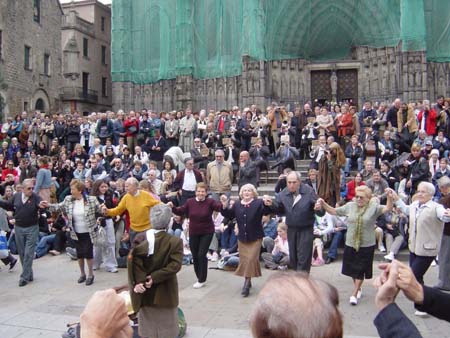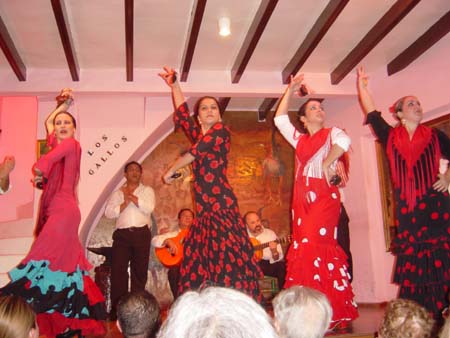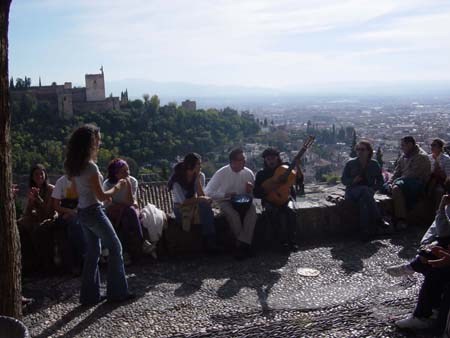KATIE'S KOMMENTS
November 6 - Final impressions of the first trip, and what I learned from it
During this first trip through Europe, I have experienced my first understanding of places outside of the United States. I have discovered my true love for history and religious studies, culture and relationships between people around the world. I have also come face-to-face with some of the many difficulties of traveling. These difficulties include being away from my home, family, and the country I have forever known and loved. There have also been some unexpected difficulties for me such as the limitations of personal space and private time. I have realized how important it is to study history from other parts of the world to completely understand the history of the country you live in. I have learned how European history has significantly impacted the US today, and how this history, in many ways, has shaped our entire world. I have learned how art contributes to our present day knowledge of history and culture, and how closely linked they all are. I have learned how history has affected the different cultures that make up a country, and how these cultures can be united into a single nation. I could go on and on…the information is endless.
As I said, there is no way I can tell you everything I have learned in a
two page essay. I will, however, give you an example of a country that I have
learned a great deal from in terms of cultural and historical differences.
During our time spent here in Spain we have noticed many differences in the
culture it is made up of. We have spent time in Barcelona in northern Spain,
and Andulucia (southern Spain). The first thing you need to do is look at
a map. Study it enough to get a feel for how far away they are from each other.
You have to look at the rivers, oceans, and countries they border to understand
any kind of cultural influences from other countries etc. Then you have to
study the background of the area. Barcelona, in northern Spain was formerly
part of a different country called Catalyuna. This will get you prepared for
any Catalan influence you might observe. Southern Spain (Andulucia) is very
close to northern Africa. This will make you aware of any kind of Muslim or
African influence you might see. Study a little of the areas' histories, but
not enough to spoil the surprise. Study just enough to know generally what
to expect in terms of sites, architecture and small bits on historical influences
such as the Gypsy and Moorish influence in southern Spain. Then experience
it. These are some of the things we observed from these two very different
areas of Spain.
In Barcelona we walked down the famous street, "La Rambla" several times. There were many street performers, mostly human statues, but the only people who seemed to admire them were the tourists. The Catalans were walking by casually, not seeming to notice them. They were relatively quiet. We also decided to go to a traditional Catalan dance that we heard took place in front of a cathedral. We decided to watch, not knowing what to expect. The music was very soft and rhythmic, and the dance was very slow and calm. Those who wanted to dance joined hands in a circle and moved from side to side in small steps in rhythm to the music. We watched as more and more people joined very casually throwing their belongings into the center of the circle and joining in the dance as if they did it every day. The music never got real exciting and we continued to watch the steady, rhythmic steps of the Catalans. We could easily sense the obvious Catalan influence in the culture - civilized, cultured and quiet.
 Our
next stop was southern Spain where we once again had only a brief idea of
what to expect of the culture. The differences between the cultures of these
two areas were very obvious. While the Catalans in northern Spain were quiet
and civilized, the Sevillians in southern Spain were festive and energetic.
The best example of this was when we went to the flamenco dance. The music
was energetic, sometimes very loud. There were men clapping their hands in
fast steady beats and improvising on what to sing. They had fun with it and
were constantly teasing one another. The flamenco dancers were festive, twirling
their skirts around and tapping their feet quickly. Particularly at the end
of the show with all of the dancers, it seemed like they were having fun with
the dancing.
Our
next stop was southern Spain where we once again had only a brief idea of
what to expect of the culture. The differences between the cultures of these
two areas were very obvious. While the Catalans in northern Spain were quiet
and civilized, the Sevillians in southern Spain were festive and energetic.
The best example of this was when we went to the flamenco dance. The music
was energetic, sometimes very loud. There were men clapping their hands in
fast steady beats and improvising on what to sing. They had fun with it and
were constantly teasing one another. The flamenco dancers were festive, twirling
their skirts around and tapping their feet quickly. Particularly at the end
of the show with all of the dancers, it seemed like they were having fun with
the dancing.
Another example of this was when we went to The Plaza of St. Nicolas in Granada.
There were a couple of charming guitarists who started playing, so we decided
to stop and watch. As the  music
got faster, some teenagers stepped up to the front and started dancing in
steps similar to those of the Flamenco dancers. It was very fun to watch,
and a whole game of guts - who would step into the circle. This flamenco dancing
was originally a Gypsy festivity and has had much Muslim and African influence
over time. The Gypsy and Moorish historical influence was also very obvious
in the area's architecture and life style. After a full day in southern Spain
you can go back to the hotel room and learn more about the history of this
festive region of Spain. You can also refer back to the map with a greater
understanding of the different cultures in both of these areas.
music
got faster, some teenagers stepped up to the front and started dancing in
steps similar to those of the Flamenco dancers. It was very fun to watch,
and a whole game of guts - who would step into the circle. This flamenco dancing
was originally a Gypsy festivity and has had much Muslim and African influence
over time. The Gypsy and Moorish historical influence was also very obvious
in the area's architecture and life style. After a full day in southern Spain
you can go back to the hotel room and learn more about the history of this
festive region of Spain. You can also refer back to the map with a greater
understanding of the different cultures in both of these areas.
This is one of many examples of the different cultures within a country we have observed through our travels. I have learned more than I ever thought I could about the impact of history on a country's culture, and how this affects the country I live in today. I am looking forward to expanding on my knowledge of this on our next two trips, and will continue to discover the many cultural and historical effects, similarities, and differences of the world.
